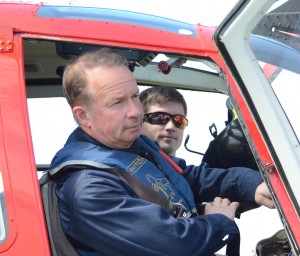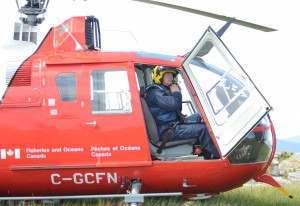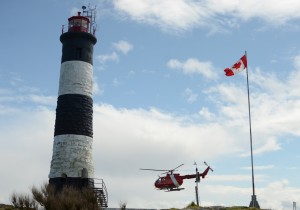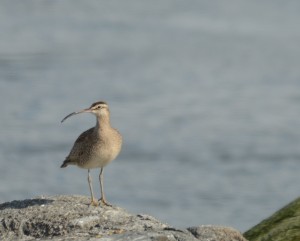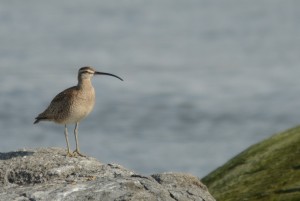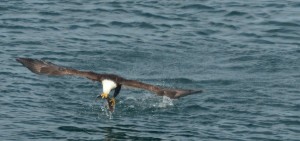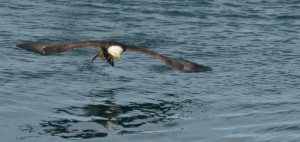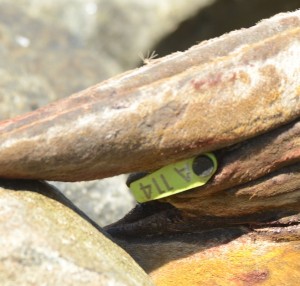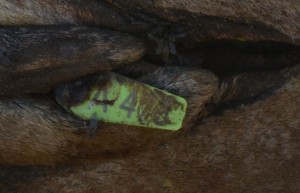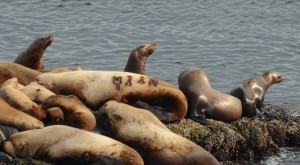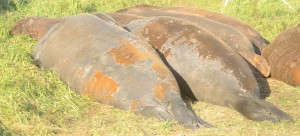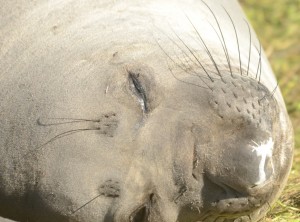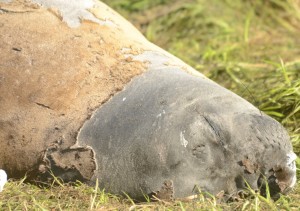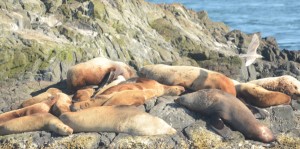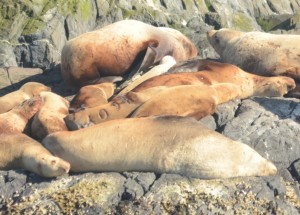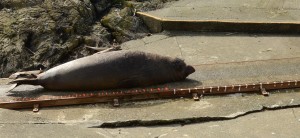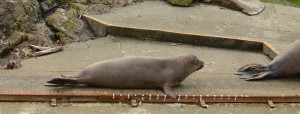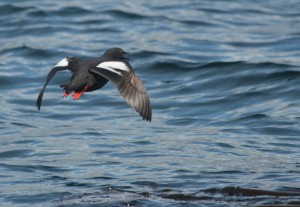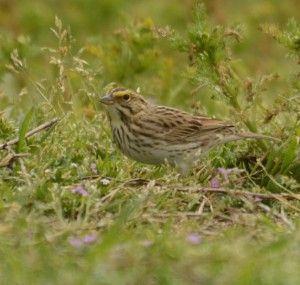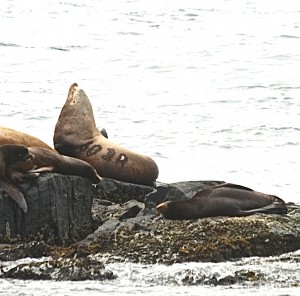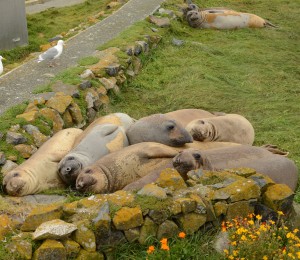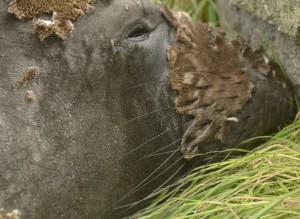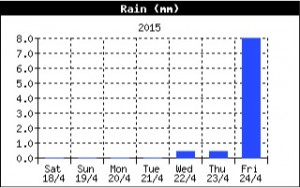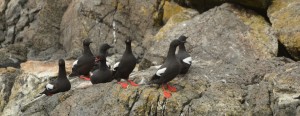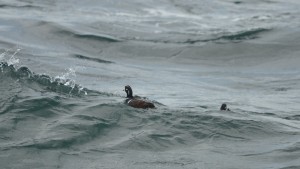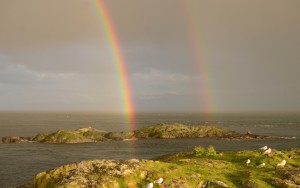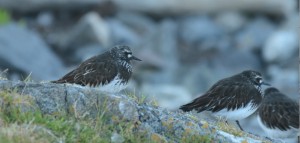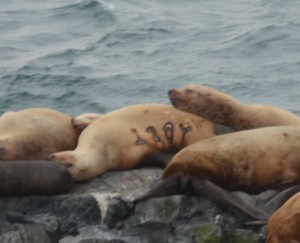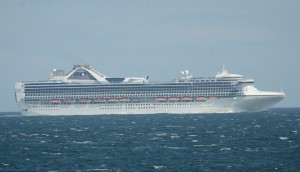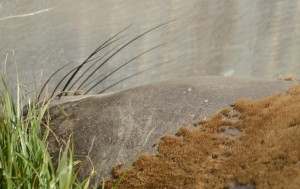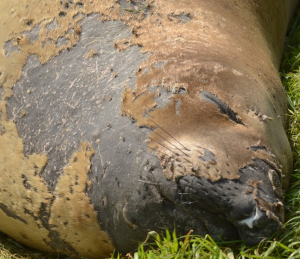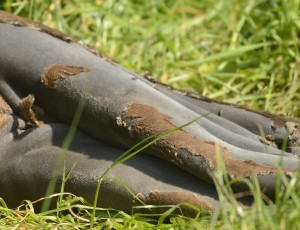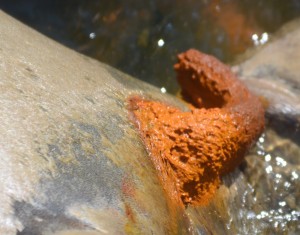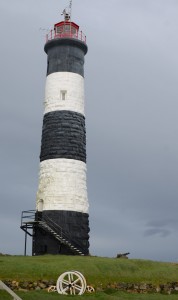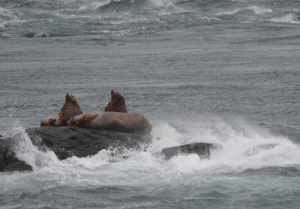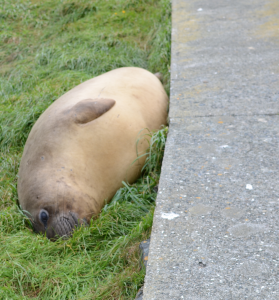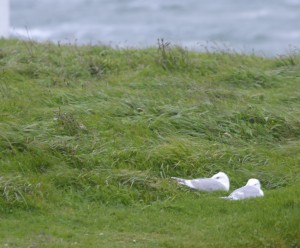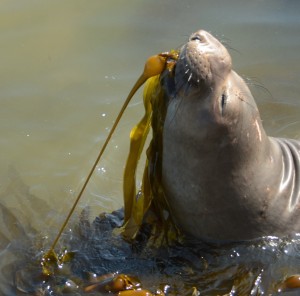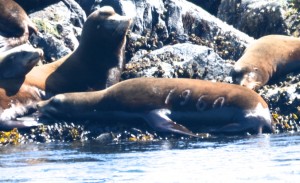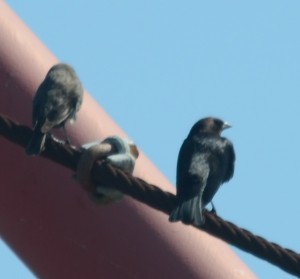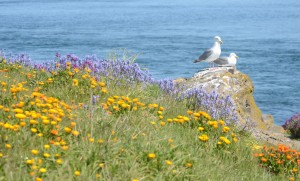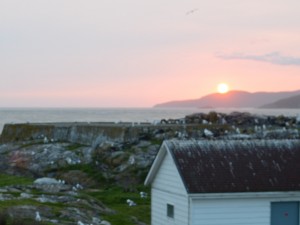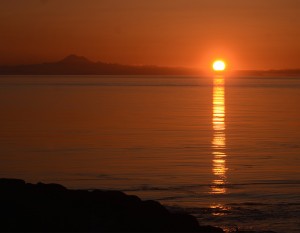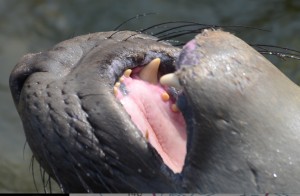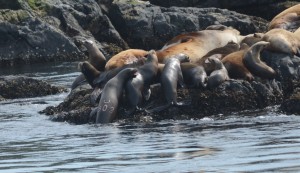By mid-morning, the light southwesterly winds left over from yesterday’s blow had wandered over to south and they stayed southerly until early evening when they turned back to west. The barometer continued the slow ascent begun early yesterday, throughout the day. Although there was a mix of sun and clouds today, light levels were high and reached over 1000 W/m2 at the peak. Forecasters are calling for strong westerly winds again, with a chance of showers Thursday.
Four Whale Watching vessels were noted in the Ecological Reserve today, visiting on return from the west, heading towards Victoria. No sports fishing vessels were noted in the ER.
The Canadian Coast Guard Helicopter (Fisheries and Oceans) dropped by today to service the light, which went dark the night before last. Dave (pilot) and Derek (technician) were a welcome sight in their lovely little Messerschmidt, which was carefully put down at the base of the light tower stairs.
Ten Whimbrels stopped for a rest and a feed today. These amazing migrators are on their way to the arctic tundra from South America and it was a treat to see them here.
I kept an eye on the Bald Eagles today and yes, they are fishing.
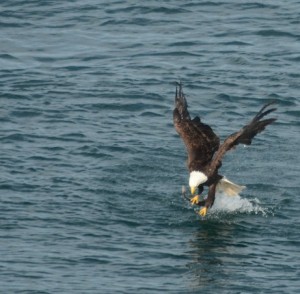
It was a right “hand” catch, transferred to both feet and then tucked up under the tail to hide it from sight.
Ten of the elephant seals managed to go through the measuring device today while I was sitting, waiting for them with the camera. I also spotted tags on the young female Northern Elephant Seal with serious skin issues. I may have mentioned her in a previous blog, I called her psoriasis sister last fall and Courtney named her crankypants in spring 2014. She is very vocal and easily disturbed by the other seals. She is usually off by herself but today she was caught in a traffic jam for daily ablutions, which really seemed to upset her. I have observed her many times last fall and this spring but never noticed the tags before. She moves as if in pain, complains loudly and leaves a trail of blood. She has many open wounds that look like holes and cracks. The right tag is number A114 and although it is difficult to read the left side, it is perhaps A476. She has all four tags still.
A branded Steller’s Sealion # 411R was noted today. She looks big for a female but that is what the record says, branded as a pup in July, 2005 at Rogue Reef, which is in the very southern end of Oregon. I will check with Pat Gearin on this identification.
There were no visitors other than the Coast Guard crew and maintenance chores were all routine.

